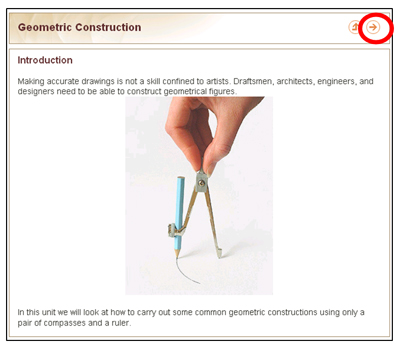

Recall that perpendicular lines are two lines that intersect at a right angle. In this part of the lesson, you will investigate different ways to construct lines or segments that are perpendicular to a given line. Click on the image below and begin your investigation. You will be redirected to a page that will allow you to navigate through a series of steps to look at why constructions of perpendicular segments work. When you see the Introduction frame, click on the peach-colored arrow in the top right of the table to advance to the Equidistance frame. When you finish the activity on the page, close that window and return to the lesson to summarize your findings.
 How did you determine which points on the map could represent the town of Ceyton? Record your findings in your notes.
How did you determine which points on the map could represent the town of Ceyton? Record your findings in your notes.
Now that you have found several possible points that could represent the town of Ceyton, how can we narrow down which point really is Ceyton? Click on the image below to take you to the next activity to continue your investigation. You will be asked to step through a series of interactive sketches and figures. If you are redirected to a picture of a hand holding a compass, click the forward arrow to advance through two frames until you reach the frame titled, "Constructing Perpendicular Lines." When you finish the activity on the page, close that window and return to the lesson to summarize your findings.
Open the NCTM Illuminations website link, Constructing a Perpendicular Line. If you click on the + symbol next to "Exploration," you will see more detailed directions. As you step through the construction, be sure to use the sliders to change the radii of circles P, R, and S. Look for what happens when the radii are really small, or really big.
Please respond to the following questions in your notes.